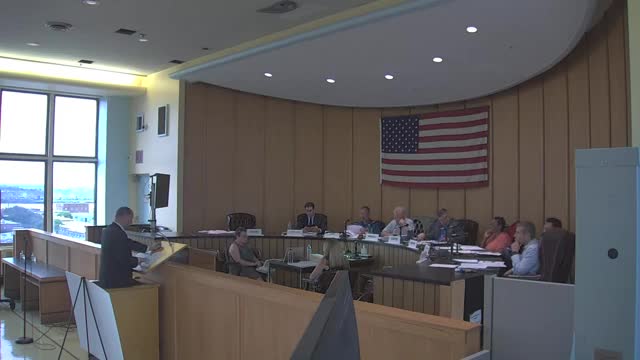Zoning Board Faces Controversy Over Proposed Home Subdivision
July 26, 2024 | Long Beach, Nassau County, New York

This article was created by AI summarizing key points discussed. AI makes mistakes, so for full details and context, please refer to the video of the full meeting. Please report any errors so we can fix them. Report an error »

In a recent zoning board meeting, discussions centered around a proposed subdivision of a residential property, which has sparked considerable debate among board members and stakeholders. The applicant seeks to demolish an existing two-family home and replace it with two single-family homes on separate lots, a move that has raised questions about neighborhood character, parking, and property conditions.
The property in question, originally subdivided in 2018, is located in a residential area designated as \"Residence A.\" The applicant's attorney referenced a 2006 court case, Daniels vs. the City of Long Beach, to argue that the proposed subdivision aligns with neighborhood standards. The case involved a similar situation where a variance was granted based on the consistency of proposed lot sizes with surrounding properties.
Board members expressed concerns regarding the potential impact of the new homes on local parking and community dynamics. One commissioner highlighted that adding two homes could increase the number of residents and vehicles in the area, potentially straining off-street parking availability. However, the applicant countered that the new configuration would actually create more parking spaces than the current setup allows.
The condition of the existing home was also a focal point of the discussion. The applicant's representative described the property as being in poor condition, citing issues such as flooding, outdated systems, and structural concerns. In contrast, some board members argued that the house, built in the 1930s, remains structurally sound and could be renovated rather than demolished.
The financial motivations behind the proposal were scrutinized, with board members questioning whether the applicant could achieve a reasonable profit through cosmetic renovations instead of a complete teardown. The applicant's representative maintained that significant renovations would trigger costly requirements, such as elevating the house due to flood regulations, making the project financially unfeasible.
As the meeting concluded, the board was urged to consider past precedents and the legal framework surrounding zoning variances. The applicant's team expressed hope that the board would grant the subdivision request, emphasizing the alignment with zoning regulations and the potential benefits to the neighborhood.
The outcome of this proposal remains uncertain as the board deliberates on the implications of the subdivision, balancing community concerns with the applicant's rights to develop the property.
The property in question, originally subdivided in 2018, is located in a residential area designated as \"Residence A.\" The applicant's attorney referenced a 2006 court case, Daniels vs. the City of Long Beach, to argue that the proposed subdivision aligns with neighborhood standards. The case involved a similar situation where a variance was granted based on the consistency of proposed lot sizes with surrounding properties.
Board members expressed concerns regarding the potential impact of the new homes on local parking and community dynamics. One commissioner highlighted that adding two homes could increase the number of residents and vehicles in the area, potentially straining off-street parking availability. However, the applicant countered that the new configuration would actually create more parking spaces than the current setup allows.
The condition of the existing home was also a focal point of the discussion. The applicant's representative described the property as being in poor condition, citing issues such as flooding, outdated systems, and structural concerns. In contrast, some board members argued that the house, built in the 1930s, remains structurally sound and could be renovated rather than demolished.
The financial motivations behind the proposal were scrutinized, with board members questioning whether the applicant could achieve a reasonable profit through cosmetic renovations instead of a complete teardown. The applicant's representative maintained that significant renovations would trigger costly requirements, such as elevating the house due to flood regulations, making the project financially unfeasible.
As the meeting concluded, the board was urged to consider past precedents and the legal framework surrounding zoning variances. The applicant's team expressed hope that the board would grant the subdivision request, emphasizing the alignment with zoning regulations and the potential benefits to the neighborhood.
The outcome of this proposal remains uncertain as the board deliberates on the implications of the subdivision, balancing community concerns with the applicant's rights to develop the property.
View full meeting
This article is based on a recent meeting—watch the full video and explore the complete transcript for deeper insights into the discussion.
View full meeting
